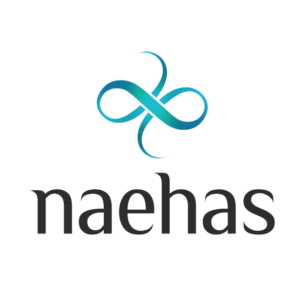It’s safe to say that marketing professionals in financial and credit card services are drowning in opportunity. And the waters in which they are working to navigate the sea of rate changes are muddied by myriad demands on their already overwhelming workload. It’s no wonder that a recent discussion among colleagues found us referencing the need for martech survival tips.
Survival tips? Sounds desperate, right? Such is the case when embarking on a major endeavor, or taking on a new adventure. So it seems perfectly appropriate for those in the bank marketing and credit card issuer martech space. Considering the complex industry in which they are operating, survival tips are precisely what can help them not only survive, but thrive.
Charting a Course for Credit Card Issuers
![]() Consider the many challenges facing finserv marketers in today’s market. The drive to digital transformation, complexities of regulatory compliance, daunting disclosure management, and multiple rate changes, the first of several anticipated after the Federal Open Market Committee (FOMC) meeting on March 17, 2022, as detailed in a Federal Reserve statement. Add to that unprecedented competition from newcomer neobanks, challenge banks, fintechs and digital asset firms.
Consider the many challenges facing finserv marketers in today’s market. The drive to digital transformation, complexities of regulatory compliance, daunting disclosure management, and multiple rate changes, the first of several anticipated after the Federal Open Market Committee (FOMC) meeting on March 17, 2022, as detailed in a Federal Reserve statement. Add to that unprecedented competition from newcomer neobanks, challenge banks, fintechs and digital asset firms.
Clearly, the time is now for card issuers to ready and steady the proverbial ship to leverage powerful technology tools that can and do drive growth.
It’s no surprise that a number of Naehas team members realized that the common theme among clients and prospects over the past six months has been a candid and clear call for help.
Here are some typical questions being fielded, from both large banks and small but mighty credit card issuers, by experienced marketers and compliance experts, alike.
How can automation help with multiple Prime Rate changes in 2022?
Where does technology come in to manage the increased volume of offers?
What’s out there to improve workflow so we can reduce risk and manage compliance?
Will a new platform actually help IT, risk and marketing work better together? How?
![]() The answer to all of these questions is automation. It’s why financial services industry leaders, consumer banking associations and customer experience (CX) consultancies are shining an increasingly bright spotlight on digital transformation (DX) in banking. It answers the demands of consumers, stakeholders and regulators alike. Like a ship’s captain trying to keep the owner, the crew and the passengers simultaneously satisfied, navigating the new normal is smooth sailing. Leveraging automation as a virtual compass is how leading credit card issuers and banks are weathering the proverbial storms.
The answer to all of these questions is automation. It’s why financial services industry leaders, consumer banking associations and customer experience (CX) consultancies are shining an increasingly bright spotlight on digital transformation (DX) in banking. It answers the demands of consumers, stakeholders and regulators alike. Like a ship’s captain trying to keep the owner, the crew and the passengers simultaneously satisfied, navigating the new normal is smooth sailing. Leveraging automation as a virtual compass is how leading credit card issuers and banks are weathering the proverbial storms.
Let’s look at the practical ways this works. This answers the question of just how automation enhances outcomes.
By improving the customer experience – increased personalization, efficient omnichannel marketing, you meet the customer where they are, the way they want to be reached. As our team has noted in multiple high-level discussions with industry experts (check out the webinars in our website’s Resource Center), there are tech tools that empower financial services marketing teams to boost personalization and profits, while driving customer engagement. Automation, then, becomes a marketing force multiplier. As our CEO, Rab Govil notes, “The ROI is immense.”
![]() These automated processes allow martech teams to improve personalization and marketing segmentation, allowing the organization to land and expand a loyal, long-lasting relationship. That drives growth.
These automated processes allow martech teams to improve personalization and marketing segmentation, allowing the organization to land and expand a loyal, long-lasting relationship. That drives growth.
When your compliance and risk management teams are able to provide transparent, easy to access disclosures, and you have confidence that your regulated content review process has reduced manual errors, that increased auditability is good for both the audit and compliance managers and the regulators alike. Prioritizing compliance and disclosure management is critical to not only avoiding massive fines, but in creating an atmosphere of transparency and reduced risk that supports the organization and its stakeholders. That drives growth.
![]() And when workflow is optimized – reducing error-prone manual reviews at every touchpoint and helping compliance, IT and marketing configure various cardholder agreements accurately, everyone wins. Cloud technology that allows for quick searchability in the Digital Asset Management (DAM) system, so secure users can locate and update rate changes and cardholder agreements. Now, the issue of increased volume, and managing different cardholder agreements, becomes a non-issue. Efficient and manageable are the words we regularly hear from clients who have used these survival tips. Shorter cycle times, due to automated processes that cut offers from months to days, allow for more offers to be approved more quickly. More offers mean more revenue. That drives growth.
And when workflow is optimized – reducing error-prone manual reviews at every touchpoint and helping compliance, IT and marketing configure various cardholder agreements accurately, everyone wins. Cloud technology that allows for quick searchability in the Digital Asset Management (DAM) system, so secure users can locate and update rate changes and cardholder agreements. Now, the issue of increased volume, and managing different cardholder agreements, becomes a non-issue. Efficient and manageable are the words we regularly hear from clients who have used these survival tips. Shorter cycle times, due to automated processes that cut offers from months to days, allow for more offers to be approved more quickly. More offers mean more revenue. That drives growth.
“Whenever you can decrease time-to-market, it allows you to be so much more effective with your resources,” said Brent Plow, Senior Manager at Naehas. He had been speaking to a major credit card issuer marketing team after meeting them at a recent banking conference (add CBA #2 link here) where the main topic was, not surprisingly, digital transformation in banking today.
Navigation through automation: 8 Benefits
![]() Whether it’s utilizing the Digital Asset Management (DAM) system to easily search and locate various card offers in a single repository, developing a process for better auditability, or shortening the lifecycle of an offer, there are measurable and meaningful ways that marketing technology teams can make quick gains.
Whether it’s utilizing the Digital Asset Management (DAM) system to easily search and locate various card offers in a single repository, developing a process for better auditability, or shortening the lifecycle of an offer, there are measurable and meaningful ways that marketing technology teams can make quick gains.
After supporting a large number of credit card issuers through the complexities of disclosures, compliance and offer management, we’ve found eight core benefits.
- Optimize workflow
- Realize operational efficiencies
- Dramatically reduce risk
- Decrease manual errors and avoid fines
- Increase/improve regulatory compliance processes
- Successfully manage disclosures
- Achieve greater speed to market
- Generate revenue
“It all comes full circle,” said Naehas Senior Director Brent Plow. In that discussion where he was answering a martech pair’s questions, he added, “It’s leveraging automation that answers all those questions…how do we get cardholder agreements, manage those disclosures, the pricing matrix and ultimately the review process with intelligent reviews of regulated content and the DAM system, which creates the full boat solution.” Driving growth with automation is a fundamental finserv solution for leading institutions. Read the full article here.
Little did he realize how appropriate his nautical reference would be in addressing how finserv is learning to chart new waters today.
Don’t miss Plow’s short program, where he offers a quick demonstration of how banks can leverage “A Better Way to Manage Fed Rate Changes: Using Naehas to Tokenize Cardholder Agreements.”






